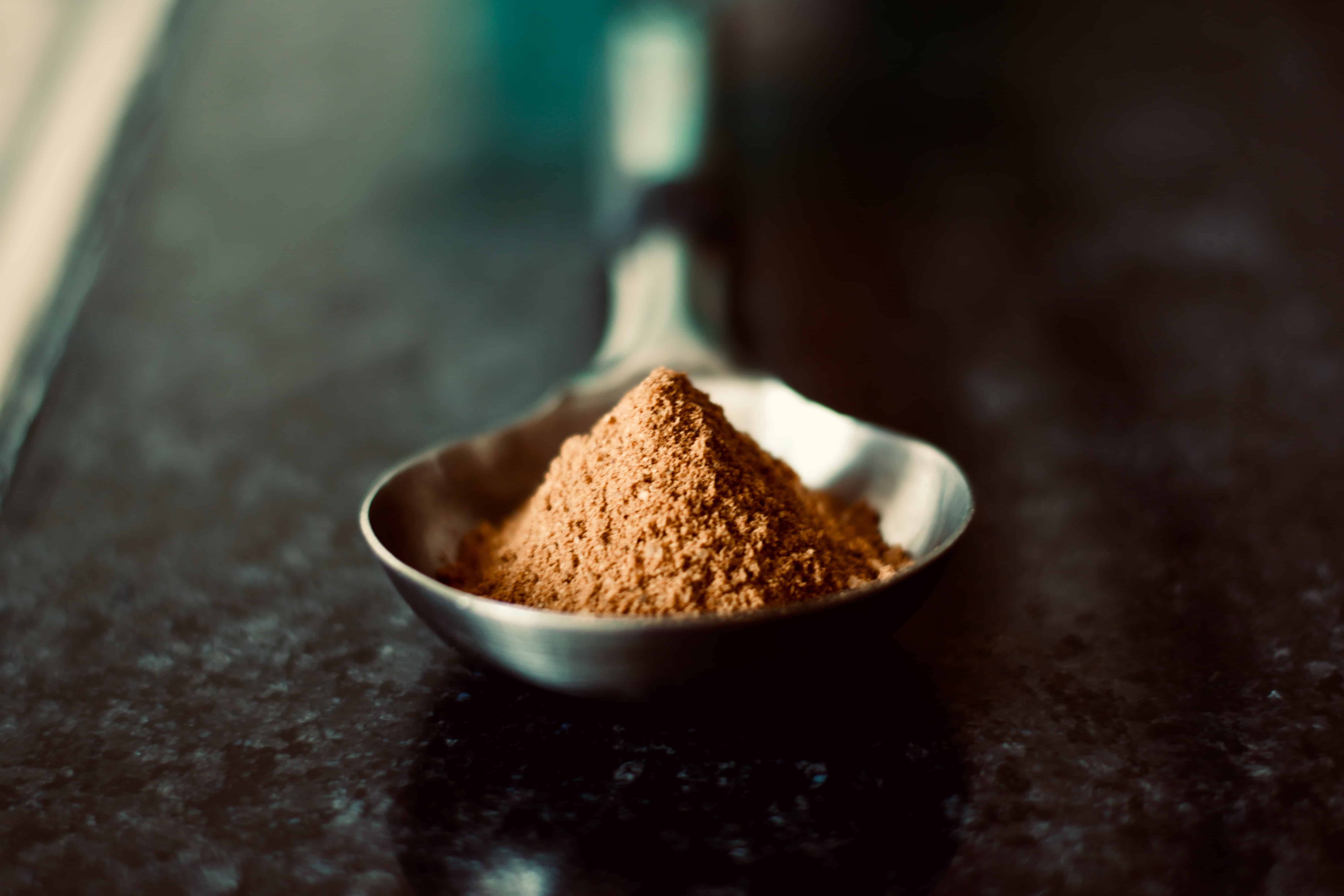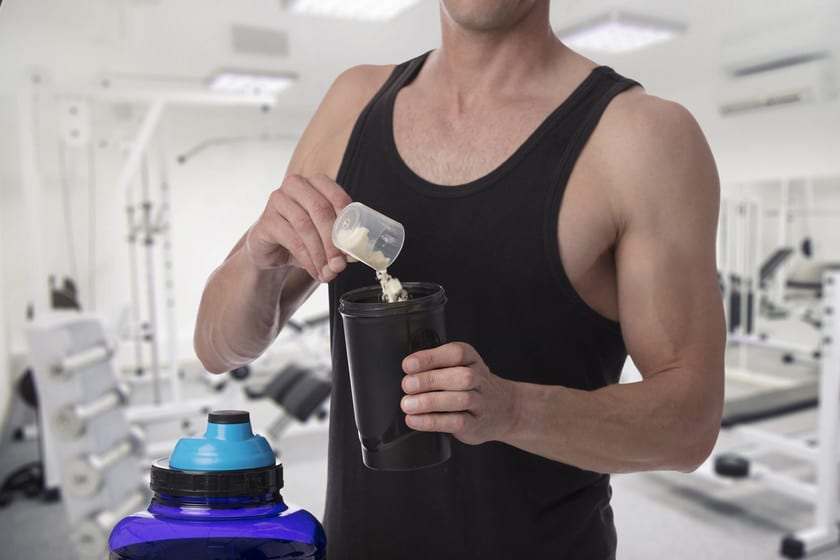
Creatine is one of the most consumed supplements among athletes. Some studies show that it can increase muscle mass, strength, and exercise performance. Additionally, it provides a number of other health benefits, such as protection against neurological diseases.
However, some people believe that creatine is unsafe and has many side effects, but these are not supported by science. In fact, it is one of the most tested supplements in the world and has an outstanding safety profile.
What is it?
The creatine is made up of three amino acids: L-arginine, glycine and L-methionine. It makes up about 1 percent of the total volume of human blood. It is transported through the blood and is used by parts of the body that have high energy demands, such as skeletal muscle and the brain.
Creatine is a substance found naturally in muscle cells. Helps your muscles produce energy during heavy lifting or high-intensity exercise. Taking creatine as a supplement is very popular among athletes and bodybuilders to gain muscle, increase strength, and improve exercise performance.
Chemically speaking, it shares many similarities with amino acids. The body can make it from the amino acids glycine and arginine. Several factors affect the body's creatine stores, including meat intake, exercise, the amount of muscle mass, and levels of hormones such as testosterone and IGF-1.
Approximately 95% of creatine is stored in the muscles in the form of phosphocreatine. The other 5% is found in your brain, kidneys, and liver.
When we take supplements, we increase phosphocreatine stores. This is a form of energy stored in cells, as it helps the body make more of a high-energy molecule called ATP. ATP is called the body's energy currency. When we have more ATP, the body can function better during exercise.
PREMIUM QUALITY
Just as whey protein can come in different forms, there are also different types of creatine.
- El monohydrate It is made up of a creatine molecule and a water molecule. This is currently the most frequently studied form of creatine, and has been shown to have the best results for improving strength and exercise performance.
- El hydrochloride is another common form of the supplement, known to have better absorption than the monohydrate. However, after comparing the effects of the two forms, the researchers found no significant difference in the maximum weight the study participants could perform on the leg press and bench press.
- El ethyl ester is a lesser-known form of the supplement, developed to maximize the body's uptake of creatine. However, compared to the monohydrate, this form may not be as effective for improving muscle mass or strength, the researchers found.
- La micronized or non-micronized refers to small differences in the way the supplement is processed. Micronization changes the shape or size of the creatine particles, but generally does not alter the effects of the supplement. Micronized dissolves more easily in water, so it reduces some of the texture of a creatine shake.
- La tamponade it is supposedly safer and more effective than the monohydrate. However, research has not been able to show that buffered creatine promotes higher muscle creatine or better strength or performance. Liquid creatine, like buffered creatine, is rumored to have faster absorption into the body than powdered forms.
- El creatine chelate and magnesium is another lesser known form of creatine that is combined with magnesium. Although there hasn't been extensive research on creatine chelate and magnesium, one study found that it can increase strength in performance tests, though not more than standard creatine.
Creatine Benefits
It is one of the most popular supplements around the world, especially among athletes. It is also the most common supplement found in sports nutrition supplements, including energy drinks. It contains numerous positive effects on health, which is why it is normal for it to be so consumed.
Improve performance
Supplements are often used by athletes because there is some evidence that they are effective in high-intensity training. The idea is that creatine allows the body to produce more energy. With more energy, athletes can train more and achieve more.
For some, increasing the body's creatine store seems to improve performance. Studies have shown that short bouts of extremely powerful activity can improve performance, especially during repeated bouts. Among the benefits found by science are:
- Increases the effects of resistance training on strength and body mass
- Increases the quality and benefits of high intensity intermittent speed training
- Improves endurance performance in aerobic exercise activities lasting more than 150 seconds
- May improve strength, power, lean mass, daily living performance, and neurological function
- It seems to be useful in intermittent exercises of short duration, high intensity
Increased body mass
Increased creatine content in muscles has been associated with increased body mass. However, according to some researchers creatine does not build muscle. The increase in body mass occurs because creatine causes the muscles to retain water.
The observed body weight gains are likely due to water retention during supplementation. It is also possible that muscle mass is built as a result of working harder during exercise. In addition, they can help prevent muscle damage and improve the recovery process after we have suffered an injury.
Creatine may also have an antioxidant effect after an intense resistance training session and may help reduce cramps. It may have a role in the rehabilitation of brain and other injuries.
Muscular dystrophy
Creatine can help improve strength in people with muscular dystrophy. Studies have shown that people with muscular dystrophy who took creatine experienced an 8 percent increase in muscle strength compared to those who did not take the supplement.
Short- and medium-term treatment with creatine improves muscle strength in people with muscular dystrophies and is well tolerated. Using it every day for 8 to 16 weeks can improve muscle strength and reduce fatigue in people with muscular dystrophy, but not all studies have produced the same results.
improves depression
It has also been shown that people who had depression added a 5 gram creatine supplement to their daily antidepressant. There was improvement in their symptoms from 2 weeks, with improvement continuing through 4 and 8 weeks. Creatine treatment may be a promising therapeutic approach for women with depression and comorbid methamphetamine dependence. However, more research is needed.
cognitive ability
There is evidence that creatine can improve mental performance. After taking a 5-gram supplement every day for 6 weeks, people seem to do better on tests of working memory and intelligence, specifically tasks performed under time pressure, than people taking a placebo.
Creatine supplementation aids cognition in the elderly. The participants took a 5-gram supplement four times a day for a week and then did some numerical and spatial tests. Those who took the supplement fared better than those who took just a placebo.
Creatine monohydrate, the best
Different forms of creatine are used in supplements, including creatine monohydrate and creatine nitrate. The United States Food and Drug Administration (FDA) has not yet approved any creatine supplements for use. Most scientists who study supplements believe that the monohydrate is the best version. Here are some science-backed reasons why this is the best type.
The safest
Many studies have shown that creatine monohydrate is very safe to consume. There is no convincing scientific evidence that short- or long-term use of creatine monohydrate has harmful effects. Studies have reported that monohydrate consumption for two to five years appears to be safe, with no documented adverse effects.
This supplement also appears to be safe at higher doses. Although a typical daily dose is 3 to 5 grams, people have taken doses of up to 30 grams per day for up to five years with no reported safety concerns. The only common side effect is weight gain. However, this should not be seen as a bad thing. Creatine increases the water content of muscle cells and can also help increase muscle mass.
Has better exercise performance than other forms
Creatine monohydrate exerts a variety of effects on health and exercise performance, including an increase in strength, power, and muscle mass. Creatine monohydrate seems to be better than ethyl ester and liquid forms of creatine. One study found that the monohydrate increased blood and muscle creatine content better than the ethyl ester form.
However, some small initial studies have suggested that buffered creatine and magnesium chelate forms may be as effective as the monohydrate in improving exercise performance. Specifically, these forms can be equally effective in increasing bench press strength and power output during cycling.
It is the easiest to find and cheap.
Some newer forms of creatine are only available in multi-ingredient products, such as pre-workout supplements. Also, these other ingredients are often unnecessary and don't have the same scientific backing as creatine.
Other forms of creatine, such as hydrochloride and ethyl ester, can be purchased as a single ingredient. However, these are only available from a small number of online or in-store vendors. On the other hand, the monohydrate form is easy to buy as a single ingredient.
Monohydrate is not only the easiest form of creatine to find as a single ingredient, it is also the cheapest. There are a few possible reasons why. Since the monohydrate has been around longer than other forms of creatine, it may be cheaper to produce.

How It Works
Creatine can improve health and sports performance in a number of ways. In high-intensity exercise, its primary function is increase phosphocreatine stores in the muscles. The extra stores can be used to produce more ATP, which is the key energy source for weight lifting and high-intensity exercise.
Creatine also helps build muscle in the following ways:
- Improved workload: Allows for more work or total volume in a single training session, which is a key factor in long-term muscle growth.
- Enhanced Cell Signaling- May increase satellite cell signaling, which aids in muscle repair and new muscle growth.
- Increased anabolic hormones: Studies point to an increase in hormones, such as IGF-1, after taking creatine.
- Greater cellular hydration- Increases the water content within muscle cells, causing a cell-volumizing effect that may play a role in muscle growth.
- Reduced protein degradation: May increase overall muscle mass by reducing muscle breakdown.
- Lower myostatin levels: Elevated levels of the protein myostatin can slow or completely inhibit the growth of new muscle. Creatine supplementation can reduce these levels, increasing growth potential.
What damage does it cause?
In high doses it is still safe. Although it is expected that it can affect the liver, kidneys or heart, although these effects have not been proven. Other possible effects are stomach pain, nausea, muscle cramps, or diarrhea. It is advised at people with kidney disease that do not use creatine, and caution is advised for people with diabetes and anyone taking blood sugar supplements.
The safety of creatine supplements has not been confirmed during pregnancy or lactation, so women are advised to avoid them at this time.
Use of creatine can lead to a weight gain. Although this may mainly be due to water, it can have a negative impact on athletes targeting particular weight classes. It can also affect performance in activities where the center of gravity is a factor.
More research is needed on how high doses of creatine can affect other bodily functions. Although experts advise caution, noting that creatine might lower blood glucose, which could affect people with diabetes or hypoglycemia; and raise blood pressure, affecting people with hypertension.
On the other hand, if we do not drink enough water, we can dehydrate. Dehydration is one of the most common side effects. Products with this substance work by causing your muscles to draw water from other areas of your body. Dehydration is a particular concern for athletes who exercise or play in hot weather for long periods of time.
They also recommend caution for people with deep vein thrombosis, electrolyte disorders or imbalances, gastrointestinal disorders, arrhythmia, kidney stones or liver disease, migraines, low blood pressure upon standing, or bipolar disorder.

When and how much should be taken?
A person needs between 1 and 3 grams of creatine per day. Approximately half of this comes from the diet and the rest is synthesized by the body. Food sources include red meat and fish. Creatine can supply energy to the parts of the body where it is needed. Athletes use supplements to increase energy production, improve athletic performance, and allow them to train harder.
The athletes Intense trainees may need to consume between 5 and 10 grams of creatine per day to maintain their performance. People who cannot synthesize it due to a health problem may need to take 10 to 30 grams a day to avoid health problems.
At recommended doses, creatine is considered safe to consume. Supplements may be safe for most people, in small amounts, but it's always best to get your nutrients from natural sources.
Many people who take supplements start with a loading phase, which leads to a rapid increase in creatine stores in the muscles. To load creatine, take 20 grams per day for 5-7 days. This should be divided into four 5-gram servings throughout the day. Absorption may be slightly improved with a carbohydrate or protein based meal due to the related insulin release.
After the loading period, we will take 3-5 grams a day to maintain high levels within the muscles. Since there is no downside to consuming creatine, you can stick with this dosage for a long time. If we choose not to do the loading phase, we can simply consume 3-5 grams a day.
Since creatine draws water into muscle cells, it is recommended to take it with a glass of water and stay well hydrated throughout the day.
Is it better to take creatine after training?
Some studies have searched for the best time to take supplemental creatine.
One of them investigated whether it was more effective for adult men to take 5 grams before or after training. The study lasted for a month, and it was observed that lean mass increased and fat decreased when taken just after physical exercise. It is also true that there are other studies that have not found differences between taking it before or after.
What is advised is to take it shortly before or after and not wait too long between taking it and training. One study found that taking the supplement close to exercise increased strength and muscle. We can even split the dose and take half before and after.
Is its effect maintained on the days that we do not train?
There are people who decide to take creatine on rest days in order to maintain its content in the muscles. At the beginning it is advisable to do a loading phase (about 20g for 5 days) to quickly increase the content in the muscles.
Afterwards, it is recommended to reduce the daily dose to 3-5 grams, in order to maintain simply.
Can it cause alopecia?
There is always talk of the positive contributions in relation to our physique and sports performance, but it is also questioned whether creatine increases hair loss. We would be facing a major problem for everyone, especially for men with a tendency to suffer from baldness. Despite the fact that the famous treatment they do in Turkey is not bad at all, we decide if this statement is true.
There is not much to indicate that creatine supplementation actually causes hair loss. In fact, much of the evidence for the link is anecdotal. However, a small study in college-age rugby players found elevated levels of a hormone associated with hair loss after 3 weeks of a creatine supplementation regimen. This hormone is called dihydrotestosterone (DHT). DHT is a hormone that is derived from another hormone you may be familiar with: testosterone. DHT is also more powerful than testosterone.
Hair follicles have their own life cycle. A growth phase of the hair is followed by a rest phase, after which the hair falls out. DHT can bind to specific hormone receptors on hair follicles. This can lead to shorter hair growth cycles, as well as thinner, shorter hair. Because less hair grows, more hairs fall out than are replaced.
Also, some people have a genetic predisposition to hair loss. Variations in a gene called AR can lead to increased activity of hormone receptors found within hair follicles.
The previous study used a creatine supplementation regimen that included seven days of creatine loading, during which a higher level of the supplement was administered. This was followed by a period of maintenance of lower creatine levels.
The researchers found that DHT levels increased more than 50 percent during the loading period and remained 40 percent above baseline during the maintenance period. Testosterone levels did not change. It is important to note here that the researchers did not assess hair loss in the study participants. Therefore, here we can only observe the effect on hormone levels.
An increase in DHT levels was observed. Since DHT levels play a role in hair loss, this increase could increase the risk, especially if we are genetically predisposed to alopecia. In general, more research is needed on the effect of creatine on DHT levels.